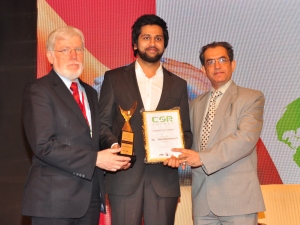North Korea will soon allow foreigners to tweet, Skype and surf the Internet from their cellphones, iPads and other mobile devices in its second relaxation of controls on communications in recent weeks. However, North Korean citizens will not have access to the mobile Internet service to be offered by provider Koryolink within the next week.
Koryolink, a joint venture between Korea Post & Telecommunications Corporation and Egypt's Orascom Telecom Media and Technology Holding SAE, informed foreign residents in Pyongyang on Friday that it will launch a third generation, or 3G, mobile Internet service no later than March 1.
The announcement comes just weeks after North Korea began allowing foreigners to bring their own cellphones into the country to use with Koryolink SIM cards, reversing a longstanding rule requiring most visitors to relinquish their phones at customs and leaving many without easy means of communication with the outside world.
The two changes in policy mean foreigners in North Korea will have unprecedented connectivity while living, working or traveling in a country long regarded as one of the most isolated nations in the world.
However, wireless Internet will not yet be offered to North Koreans, who are governed by a separate set of telecommunication rules from foreigners. North Koreans will be allowed to access certain 3G services, including SMS and MMS messaging, video calls and subscriptions to the state-run Rodong Sinmun newspaper, but not the global Internet.
The lack of Internet access in North Korea has put the country at the bottom of Internet freedom surveys. Though North Korea is equipped for broadband Internet, only a small, approved segment of the population has access to the World Wide Web.
During a visit to Pyongyang early last month, Google's executive chairman pressed the North Koreans to expand access to the Internet. Eric Schmidt noted that it would be ``very easy'' for North Korea to offer Internet on Koryolink's fast-expanding 3G cellphone network.
``As the world becomes increasingly connected, the North Korean decision to be virtually isolated is very much going to affect their physical world and their economic growth,'' he wrote in a Jan. 20 blog post after returning to the United States. ``It will make it harder for them to catch up economically. It is their choice now, and in my view, it's time for them to start, or they will remain behind.''
Soon after Schmidt's visit, Google unveiled maps of North Korea with more details based on contributions from foreigners using satellite images and publicly available information to map the country. Before, North Korea was left mostly blank in Google Maps but with the update, Pyongyang and major North Korean cities are shown with street names, parks, roads, train stops and monuments.
Cellphone use has multiplied in North Korea since Orascom built a 3G network more than four years ago. More than a million people are now using mobile phones in North Korea, where the network now covers most major cities, according to Orascom.
Chinese-made Huawei cellphones sold by Koryolink are not cheap, with the most basic model costing about $150, and the governments restricts North Koreans from phoning abroad or foreigners from their cellphones. Still, mobile phones have become a must-have accessory among not only the elite in Pyongyang but also the middle class in cities such as Kaesong and Wonsan.
Foreigners, meanwhile, can now purchase SIM cards at the airport or at Koryolink shops for 50 euros ($70). Calls abroad range from 0.38 euros a minute to Switzerland and France and more than 5 euros a minute to the U.S. Calls to South Korea remain prohibited.
Starting next week, foreigners will be allowed to purchase monthly mobile Internet data plans for use with a USB modem or on mobile devices using their SIM cards. Prices for the service haven't been announced yet.
The expansion of cellphone and Internet services _ at least for foreigners _ comes as North Korea promotes the development of science and technology as a means of improving its moribund economy.
Late leader Kim Jong Il was revealed to have been a Mac user. His Macbook Pro, or a replica, is enshrined at the Kumsusan mausoleum where his body lies in state.
Current leader Kim Jong Un, meanwhile, was shown in a recent photo with a more mobile computing accessory: a smartphone.
Source: http://www.indianexpress.com/news/north-korea-to-allow-mobile-internet-for-foreigners/1078119/0




































